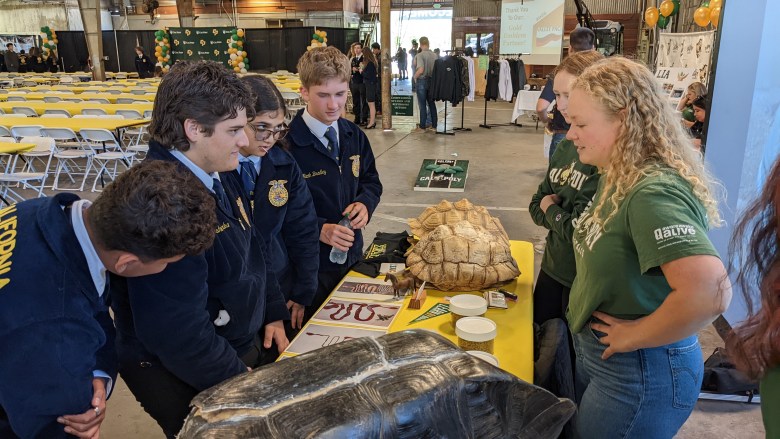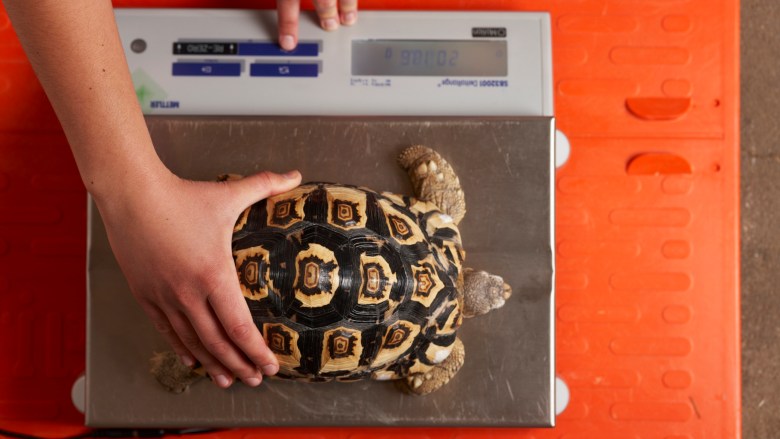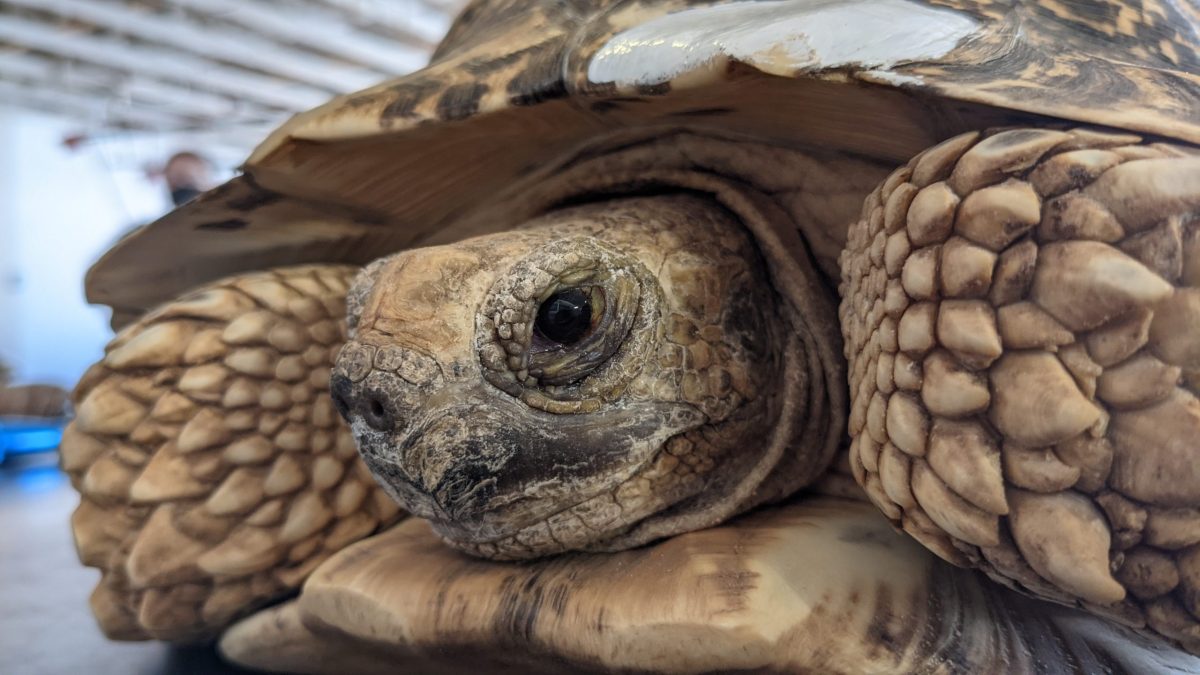At the top of Cal Poly’s campus at the poultry center lives a colony of leopard tortoises. These seventeen tortoises are taken care of and studied by students in ASCI 290, the reptile husbandry enterprise class.
Offered every quarter – including over the summer – the class typically consists of fifteen students, each with three to four weekly shifts to check on the tortoises.
Two students are there in the morning, at midday and in the evening to take care of the animals and their enclosures, while collecting data.
During the morning shift at 9 a.m. the tortoises are fed, enclosures cleaned and data collected based on the environment including the temperature of their mats.
The midday shift is one hour between noon and 3 p.m. where students get to take the animals outside for sun exposure while checking that they have water and everything the tortoises need.
Then in the evening shift at 7 p.m., additional data on their environment is collected, the food they ate is recorded and the space is cleaned and closed up for the night.

Animal science senior Mira Meckel is currently taking the class for a second time and plans to help with the colony this summer.
“You kind of get attached to the tortoises, in a way,” she said. “It’s kind of a nice part of your day just go through routine.”
The tortoises were born in 2004 and were donated by the National Zoo in Washington D.C., which is part of the Smithsonian Institution. They’ve been on campus since 2008.
They were born at the National Zoo but were donated to the school to make space for tortoises with a higher conservational need as leopard tortoises are not endangered.
Dr. Mark Edwards, who began working at Cal Poly in 2007, has been with the colony ever since.
“I really appreciate how many students have been able to take advantage of these animals and learn from them,” he said.
He says that these students are developing standards for the leopard tortoises, as there is not a lot of information on them. So this class shares their data through publications and presentations to the public.
The students provide all of the care to these animals while managing the facility and the equipment that goes along with this. The program is built around how these animals develop when they’re fed a specific diet and maintained in a specific environment by a rotating group of students.
This class allows students to work with a different type of animal than the others on campus through consistent evidence-based animal care applicable to other animal management systems. Some of the students who have worked with the colony are now working in over twenty zoos and aquariums across the country.
Edwards teaches the reptile husbandry class, which meets as a whole group every Thursday from 3:40 to 5:30 p.m. for the students to take measurements of the colony.
To track the growth of all seventeen of the tortoises, every week they take measurements of their shell, carapace, weight, plastron and height.
The carapace measurement is the depth of the scoots in the tortoises’ shell and the plastron is the underside of the animal. These measurements are all cataloged by the class, including by animal science sophomore Annabelle Kao.
“They’re giving you freedom and like kind of autonomy to learn what it’s like to actually like work in the field,” she said.

The leopard tortoise colony has been located in this temporary space since the pandemic, but they are now seeking donations for a new location next to the incoming animal health center.
This animal health center is now in the design phase of planning. Edwards said that if the two facilities are built simultaneously, they can be more efficient with their budget.
Currently, the tortoises are in a biosecure area to limit exposure to pathogens. Specifically, the temporary location lies within the biosecurity perimeter of the Poultry Center.
In the space closer to the center of campus, the design will allow for more people, including the general public, to come see, appreciate and learn about the tortoises.
“We’ll be in a place where we can share these animals and their story with the other students on campus, the campus community, and the community of San Luis Obispo at large,” Edwards said.
The program is hoping to raise $250,000 for the 2,500-square-foot structure, with a total goal of $450,000 as the College of Agriculture, Food and Environmental Sciences (CAFES) have already pledged $200,000 in state funds.
Donations to support the new habitat for the leopard tortoise colony can be given through CAFES Giving by identifying “LEOPARD TORTOISE HOUSING PROJECT” as the fund for the donation.

